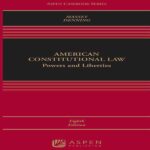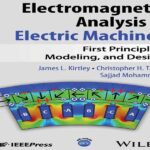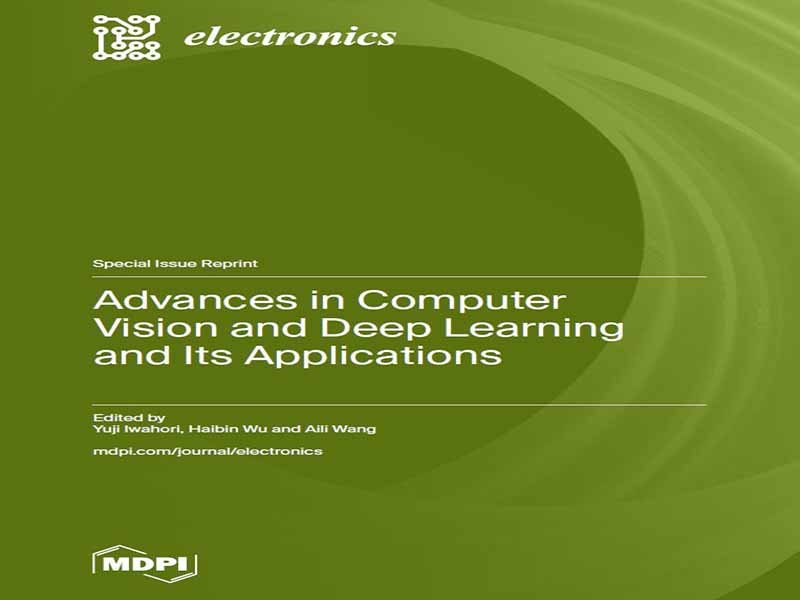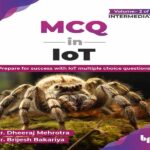- عنوان کتاب: Advances in Computer Vision and Deep Learning and Its Applications
- نویسنده: Yuji Iwahori, Haibin Wu, Aili Wang
- حوزه: بینایی کامپیوتر
- سال انتشار: 2025
- تعداد صفحه: 654
- زبان اصلی: انگلیسی
- نوع فایل: pdf
- حجم فایل: 21.1 مگابایت
(1) بینایی کامپیوتر: حوزه بینایی کامپیوتر از طریق فناوری مقیاسبندی زمان آزمون (TTS) [1] گامهای قابل توجهی در قابلیت استدلال پویا برمیدارد. TTS با تخصیص انعطافپذیر منابع محاسباتی، استحکام و قابلیت تفسیر مدلها را در وظایف پیچیده بهینه میکند. مدلهای پایه چندوجهی، مانند CLIP (پیشآموزش زبان-تصویر مقابلهای) [2] و Florence، تلفیق عمیق بینایی و زبان را از طریق تکنیکهای همترازی بین وجهی تسهیل میکنند. این پیشرفتها دقت پاسخ به پرسش بصری (VQA) و بازیابی بین وجهی را به طور قابل توجهی بهبود بخشیدهاند. فناوریهای هوش مصنوعی مولد، مانند انتشار پایدار، نیز محدودیتهای تولید تصویر دوبعدی را از بین بردهاند و امکان گذار به مدلهای صحنه سهبعدی مبتنی بر معنا، مانند میدانهای تابش عصبی (NeRF) [3] را فراهم میکنند. این تغییر، تولید مدلهای مکانی با ویژگیهای تعاملی فیزیکی را از یک صفحه ورودی واحد پشتیبانی میکند و الگوی جدیدی را برای واقعیت مجازی و طراحی صنعتی ارائه میدهد. علاوه بر این، معرفی مفهوم هوش فضایی [4] به سیستمهای بینایی کامپیوتر اجازه میدهد تا تعاملات فیزیکی را در فضای سهبعدی شبیهسازی کنند و توسعه هوش تجسمی و ناوبری ربات را هدایت کنند. با این حال، این چارچوبهای فناوری ماکروسکوپی هنوز با چالشهای متعددی از جمله سازگاری ناکافی الگوریتمی، هزینههای محاسباتی بالا و نمایشهای چندوجهی چندوجهی در سناریوهای خاص روبرو هستند. در حالی که این شماره ویژه پیشرفت قابل توجهی در بهبود الگوریتمها و سازگاری صحنه را برجسته میکند، دو شکاف دانش کلیدی همچنان وجود دارد. اول، بخش عمدهای از تحقیقات فعلی بر بهینهسازی وظایف بینایی تکوجهی متمرکز است، در حالی که کاوش در تکنیکهای همترازی چندوجهی نسبتاً توسعه نیافته است. دوم، تحقیقات در مورد قابلیتهای استدلال پویا هنوز در مراحل ابتدایی خود است و مدلهای موجود برای برآورده کردن خواستههای تطبیقی زمان واقعی محیطهای تعامل فیزیکی پیچیده تلاش میکنند. علاوه بر این، ادغام هوش مصنوعی مولد با هوش فضایی همچنان ناکافی است و پیشرفتهای بیشتری برای بهبود شبیهسازی ویژگیهای فیزیکی پویا مورد نیاز است. تحقیقات آینده باید دانش پیشین چندوجهی و مکانیسمهای استدلال پویا را بیشتر ادغام کند. از یک سو، توصیفات زبانی را میتوان در فرآیند تشخیص نقص صنعتی تعبیه کرد و میتوان یک فضای نمایش بصری-معنایی مشترک برای افزایش قابلیت تفسیر مدل ایجاد کرد. از سوی دیگر، تکنیکهای تولید میدان شعاعی عصبی مبتنی بر موتورهای فیزیک باید بررسی شوند تا شبیهسازی تعاملات فیزیکی در مدلهای سهبعدی را از طریق معرفی محدودیتهای دینامیکی جسم صلب بهبود بخشند. علاوه بر این، برای بازسازی صحنه SFM و پهپاد افزایشی، توسعه یک استراتژی تخلیه بار محاسباتی تطبیقی که ویژگیهای دستگاههای محاسبات لبه را ترکیب میکند، حسگری حلقه بسته سهبعدی بلادرنگ را با همکاری ابری امکانپذیر میسازد. (2) استخراج ویژگی و انتخاب تصویر: چارچوبهای یادگیری خودنظارتی و یادگیری مقایسهای، مانند SimCLR (یادگیری ساده مقایسهای نمایشهای بصری) [5] و MoCo (تضاد مومنتوم)، به الگوهای غالب برای استخراج ویژگی تبدیل شدهاند. این چارچوبها به طور قابل توجهی وابستگی به دادههای برچسبگذاری شده را کاهش میدهند، به خصوص در کار نمونه کوچک تصویربرداری پزشکی. تکنیکهای انتخاب تصویر، مکانیسمهای توجه را با یادگیری تقویتی ترکیب میکنند تا نمونهبرداری پویا را بهینه کنند. روشهای تفسیرپذیری، مانند نسخه بهبود یافته Grad-CAM++ (نگاشت فعالسازی کلاس با وزن گرادیان) با تجسم اهمیت ویژگیها، اعتبار مدل را در سناریوهای بسیار حساس، مانند سنجش از دور و امنیت، افزایش میدهند. در مقایسه با الگوهای یادگیری خودنظارتی و یادگیری تطبیقی رایج فعلی، تحقیقات ارائه شده در این شماره ویژه بر بهینهسازی توصیف ویژگیها و ادغام دادههای ناهمگن در سناریوهای عمودی تمرکز دارد. با این حال، دو شکاف دانش باقی مانده است. اول، در سطح نظریه پایه، اکثر روشها نمیتوانند مزایای تکنیکهای یادگیری تطبیقی خودنظارتی معاصر را به طور کامل ادغام کنند و توانایی تعمیم مدل را محدود میکنند. دوم، مکانیسم بهینهسازی پویا هنوز یک حلقه بسته کامل تشکیل نداده است و تکنیکهای انتخاب تصویر موجود فاقد یک استراتژی نمونهبرداری پویا هستند که یادگیری تقویتی را ادغام کند، که دستیابی به بهینهسازی همافزایی تشخیص ناحیه معیوب و کارایی بررسی دستی در سناریوهای بازرسی کیفیت صنعتی را چالش برانگیز میکند. علاوه بر این، اگرچه چندین مطالعه از تحلیل ویژگیهای بصری استفاده کردهاند، روشهای تفسیرپذیری هنوز به نقشههای حرارتی سنتی متکی هستند. چارچوبهای تفسیرپذیر جدیدتر، مانند نسخه بهبود یافته Grad-CAM++، معرفی نشدهاند که به طور بالقوه صدور گواهینامه اعتبار مدل را در حوزههای با قابلیت اطمینان بالا مانند سنجش از دور و امنیت محدود میکند. تحقیقات آینده باید کاوش در سه حوزه کلیدی را عمیقتر کند: اول، لازم است که …
(1) Computer Vision: The field of computer vision is making significant strides in dynamic reasoning capability through test-time scaling (TTS) [1] technology. TTS optimizes the robustness and interpretability of models in complex tasks by flexibly allocating computational resources. Multimodal base models, such as CLIP (contrastive language-image pre-training) [2] and Florence, facilitate the deep fusion of vision and language through cross-modal alignment techniques. These advancements have significantly improved the accuracy of visual question answering (VQA) and cross-modal retrieval. Generative AI technologies, such as Stable Diffusion, have also broken through the limitations of 2D image generation, enabling the transition to semantics-driven 3D scene models, like neural radiance fields (NeRF) [3]. This shift supports the generation of spatial models with physically interactive attributes from a single sheet of input, providing a new paradigm for virtual reality and industrial design. In addition, the introduction of the spatial intelligence [4] concept allows computer vision systems to simulate physical interactions in 3D space, driving the development of embodied intelligence and robot navigation. However, these macroscopic technological frameworks still face several challenges, including inadequate algorithmic adaptation, high computational costs, and fragmented cross-modal representations in specific scenarios. While this Special Issue highlights significant progress in algorithmic improvements and scene adaptation, two key knowledge gaps persist. First, much of the current research is centered on the optimization of unimodal vision tasks, while exploration into multimodal alignment techniques remains relatively underdeveloped. Second, research on dynamic reasoning capabilities is still in its infancy, and existing models struggle to meet the real-time adaptive demands of complex physical interaction environments. In addition, the integration of generative AI with spatial intelligence remains insufficient, and further breakthroughs are needed to enhance the simulation of dynamic physical attributes. Future research should further integrate multimodal a priori knowledge and dynamic reasoning mechanisms. On the one hand, linguistic descriptions can be embedded into the industrial defect detection process, and a joint visual-semantic representation space can be constructed to enhance model interpretability. On the other hand, neural radial field generation techniques based on physics engines need to be explored to enhance the simulation of physical interactions within 3D models through the introduction of rigid-body dynamics constraints. In addition, for incremental SFM and UAV scene reconstruction, developing an adaptive computation offloading strategy that combines the characteristics of edge computing devices will enable real-time 3D closed-loop sensing with cloud collaboration. (2) Feature Extraction and Image Selection: Self-supervised learning and comparative learning frameworks, such as SimCLR (Simple Contrastive Learning of Visual Representations) [5] and MoCo (Momentum Contrast), have become the dominant paradigms for feature extraction. These frameworks significantly reduce the reliance on labeled data, especially in the small-sample task of medical imaging. Image selection techniques combine attention mechanisms with reinforcement learning to optimize dynamic sampling. Interpretability methods, such as the improved version of Grad-CAM++ (gradient-weighted class activation mapping) enhance the model’s credibility in highly sensitive scenarios, like remote sensing and security, by visualizing the importance of features. Compared with current mainstream self-supervised learning and comparative learning paradigms, the research presented in this Special Issue focuses on feature characterization optimization and heterogeneous data fusion in vertical scenarios. However, two knowledge gaps remain. First, at the level of basic theory, most methods fail to fully integrate the advantages of contemporary self-supervised comparative learning techniques, limiting the model’s generalization ability. Second, the dynamic optimization mechanism has not yet formed a complete closed loop, and existing image selection techniques lack a dynamic sampling strategy that integrates reinforcement learning, making it challenging to achieve the synergistic optimization of defective region detection and manual review efficiency in industrial quality inspection scenarios. In addition, although several studies have adopted visual feature analysis, interpretability methods still rely on traditional heat maps. Newer interpretable frameworks, such as the improved version of Grad-CAM++, have not been introduced, potentially limiting the certification of model credibility in high-reliability domains like remote sensing and security. Future research should deepen the exploration of three key areas: First, it is necessary to establish a deep fusion mechanism between generic feature extraction frameworks and domain-specific knowledge, and to develop a self-supervised pre-training model that requires fewer samples for pathological image analysis. Second, there is a need to build a closed-loop optimization system that is dynamically interpretable, and to form a complete cognitive chain from feature extraction to decision-making validation. Lastly, it is crucial to break through the intrinsic limitations of two-dimensional visual representation, and to develop an implicit model based on neural radiance fields (NeRFs), which represent the most effective approach to visualization. Additionally, exploring the synergistic integration of multimodal large language models with feature extraction networks will open up new directions for constructing intelligent visual systems with semantic understanding capabilities.
این کتاب را میتوانید از لینک زیر بصورت رایگان دانلود کنید:
Download: Advances in Computer Vision and Deep Learning and Its Applications



































نظرات کاربران